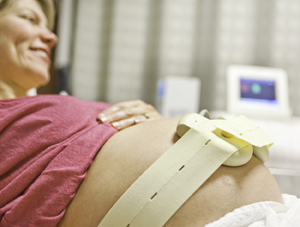Nonstress and Contraction Stress Tests
Nonstress and Contraction Stress Tests

Nonstress and contraction stress testing is a simple way to check the well-being of your baby. The tests let your healthcare provider know whether it is best to deliver your baby right away, or to wait.
Be sure to talk to your healthcare provider if you have questions about these procedures.
What to expect during your test
-
At your healthcare provider's office or hospital, you lie down on your back or side in bed, or you recline in a chair.
-
A fetal heart monitor is placed around your stomach, held in place by a belt or strap, in the area where the baby’s heartbeat is the loudest.
-
Another device, held in place by a second belt or strap, is placed on your stomach to measure contractions of your uterus.
Nonstress test
A nonstress test allows your healthcare provider to monitor your baby’s heartbeat. If the heartbeat increases normally during the test, it means that your baby is probably getting enough oxygen and nutrients from your blood.
Contraction stress test
The contraction stress test (CST) tells your healthcare provider whether your baby’s heartbeat is reacting normally during mild, labor-like contractions. This offers a preview of how well your baby will withstand the stress of labor.
During CST
To stimulate mild contractions in your uterus, your healthcare provider will give you an IV medicine. Oxytocin is almost always used.
Updated:
March 15, 2019
Sources:
Antepartum Fetal Heart Rate Assessment. UpToDate, Nonstress test and contraction stress test. UpToDate
Reviewed By:
Burd, Irina, MD, PhD,Freeborn, Donna, PhD, CNM, FNP